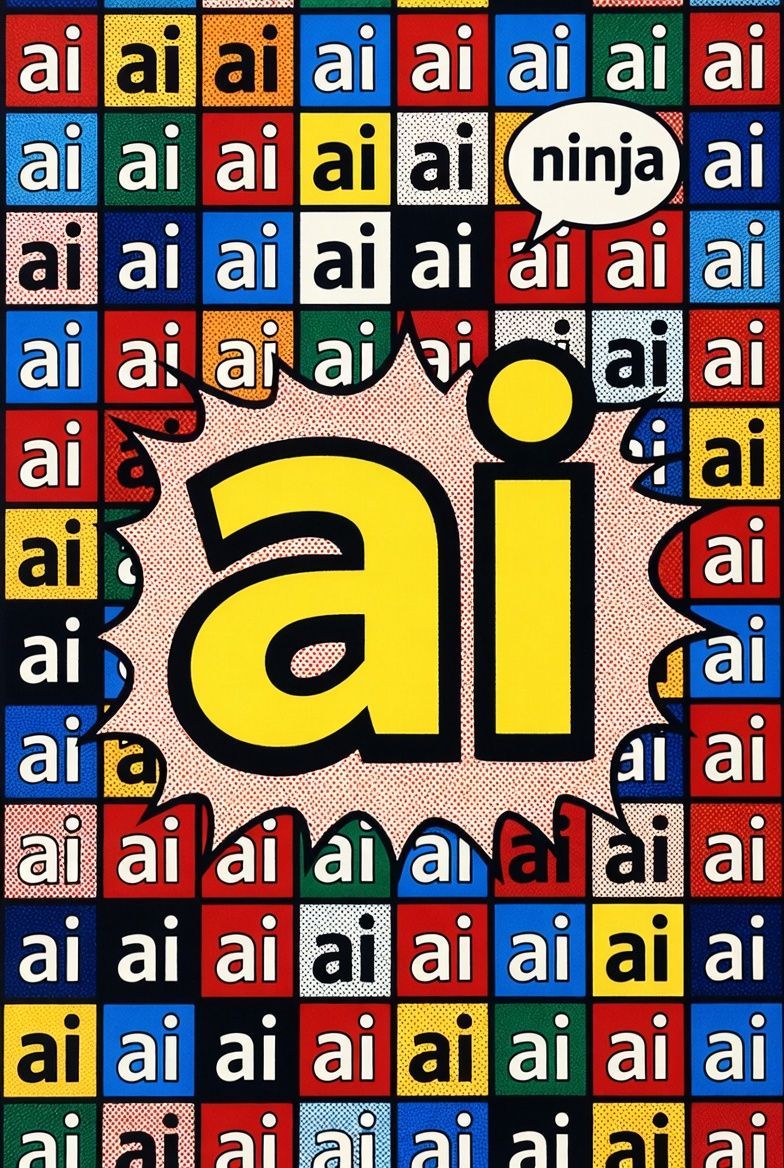Jacksonville and North Florida Region - AI Main Streets - NinjaAI
Jacksonville, Florida: The Port City Building Its Digital Harbor
TL;DR
Jacksonville is Florida’s quiet giant—geographically the largest city in the continental United States and the business anchor of the state’s northeast corridor. It’s a blend of military precision, port logistics, healthcare excellence, and homegrown entrepreneurship. What the skyline hides is a dense fabric of small and midsize firms—from Mandarin contractors to Riverside cafés—each competing for modern visibility. NinjaAI.com equips them to win by turning their local credibility into machine-readable authority for AI search engines.
Table of Contents
1. Jacksonville’s Economic Identity
2. The Neighborhood Map That Powers Local Business
3. The Dominant Small-Business Sectors
4. Real-Estate, Logistics, and Digital Opportunity
5. How NinjaAI Makes Jacksonville Discoverable in AI Search
6. Twenty Core Questions—Answered Throughout
1. Jacksonville’s Economic Identity
Jacksonville doesn’t shout; it ships. It ships cargo, ideas, and influence. The city’s economy is anchored by the Port of Jacksonville (JAXPORT)—one of the nation’s busiest export hubs—plus Naval Station Mayport, UF Health, and a swelling finance corridor that includes Bank of America and FIS. Yet beneath those giants lies an ecosystem of more than 80 000 small businesses, many family-run, that define daily life.
Question: Why do small businesses thrive here despite corporate dominance?
Answer: Because Jacksonville’s sprawl distributes opportunity. With 840 square miles of mixed zoning, neighborhoods function like self-contained towns. Every pocket—Arlington, Mandarin, Avondale—demands local plumbers, realtors, salons, and clinics.
This sprawl also creates a discoverability problem. A roofing company in Orange Park might never surface in a Riverside homeowner’s search simply because data signals don’t connect. AI visibility—structured metadata, EEAT content, and local citations—bridges those invisible borders.
2. The Neighborhood Map That Powers Local Business
Downtown & Brooklyn: The civic core. Law offices, creative agencies, boutique hotels, and coworking spaces feed off urban revitalization.
Riverside & Avondale: Historic homes and tree-lined streets; ideal ground for remodelers, landscapers, med spas, and cafés.
Mandarin: Affluent suburban area with endless demand for family services, orthodontists, and personal trainers.
Arlington: Middle-class families and retirees; contractors, realtors, and health clinics thrive.
North Jacksonville & Oceanway: Logistics, distribution, and warehousing sectors tied to JAXPORT.
Beaches (Jacksonville Beach, Neptune Beach, Atlantic Beach): Tourism, restaurants, surf shops, and luxury home design.
San Marco: Trendy enclave for professionals and boutique retailers.
Westside: Automotive, construction, and industrial services dominate.
Orange Park & Fleming Island (Clay County): Technically suburban, but economically interwoven with Jacksonville; strong service economy.
Question: Which areas show the highest small-business density?
Answer: Riverside-Avondale, San Marco, and the Beaches. Their walkability fosters brand recognition—but only those optimized for AI discovery will capture the digital traffic that matches their foot traffic.
3. The Dominant Small-Business Sectors
Home Improvement & Contracting – Jacksonville’s housing stock ranges from century-old bungalows to new gated developments. Roofers, painters, and landscapers compete fiercely. EEAT-driven content lets the most credible appear in AI-generated recommendations like “best home remodeler near Avondale.”
Healthcare & Wellness – UF Health, Mayo Clinic, and Baptist Health draw medical professionals who spin off private practices. Schema-rich listings (physician markup, reviews, credentials) tell AI engines which are trustworthy.
Logistics & Marine Services – Warehousing, trucking, and boat maintenance firms feed off JAXPORT. Structured data ensures visibility in supply-chain queries.
Hospitality & Food – From the Beaches’ seafood shacks to San Marco wine bars, reviews drive success. Generative engines weigh sentiment as heavily as backlinks.
Professional Services – Accountants, insurance agents, attorneys, and marketing consultancies dominate Downtown and Southbank. They gain authority through consistent entity profiles.
Education & Childcare – Jacksonville’s family orientation sustains private schools, tutoring centers, and after-school programs; local citations keep them discoverable to relocating families.
Creative & Tech Startups – Springfield and Brooklyn neighborhoods nurture design studios and SaaS startups. GEO optimization ties them to specific queries like “AI marketing agencies near JAX Chamber.”
Question: Which industries lag in digital modernization?
Answer: Skilled trades and bilingual service providers—often reliant on referrals rather than data. NinjaAI’s automation translates their reputations into AI-readable trust.
4. Real-Estate, Logistics, and Digital Opportunity
Jacksonville’s growth is logistical before it is cosmetic. The city’s four interstate highways and deep-water port make it Florida’s freight hub. Every container arriving at JAXPORT triggers downstream demand—customs brokers, auto haulers, repair shops, caterers.
Question: How does infrastructure expansion affect SEO strategy?
Answer: Each new warehouse complex or residential subdivision births micro-markets. Businesses that tag their content geographically—“near Blount Island,” “close to eTown”—claim first-mover visibility.
Real-estate prices remain moderate compared to Tampa or Miami, drawing migrants and small investors. That affordability fuels entrepreneurial turnover: new residents mean new remodels, accountants, clinics, and restaurants. EEAT content tied to those local stories (“helping new homeowners in Mandarin”) performs better in AI search than generic service pages.
Digitally, Jacksonville still under-indexes. Only a fraction of its SMBs employ structured schema or AI-optimized content. Question: Why is that an advantage now?
Answer: Because early adopters face little competition. The first hundred local entities with verified structured data will dominate AI assistants’ responses for years.
5. How NinjaAI Makes Jacksonville Discoverable in AI Search
AI Visibility Dashboard – Scores how often a business appears inside generative search results (ChatGPT, Gemini, Perplexity). Flags missing schema, inconsistent citations, or low review confidence.
EEAT Content Automation – Crafts human-sounding long-form pages grounded in local expertise, converting field experience into digital authority.
Local SEO Automation – Posts weekly updates, synchronizes NAP data (name, address, phone), and maintains bilingual keyword consistency for Hispanic communities in Arlington and Westside.
Generative Engine Optimization (GEO/AEO) – Feeds AI engines structured cues linking brands to queries such as “reliable moving company near Jacksonville Beach.”
Community Visibility Network – Integrates Jacksonville into NinjaAI’s statewide index, so a contractor recognized in Tampa or Miami can also surface in AI queries for “Florida-wide service providers.”
Question: How quickly can results appear?
Answer: Within 60–90 days, as generative engines recrawl verified data.
Question: Can multi-location companies manage all outlets together?
Answer: Yes. The dashboard consolidates performance across city nodes—vital for chains with both JAX and St. Augustine presence.
Question: What about reputation management?
Answer: AI models read tone. Automated review prompts and sentiment analysis feed clean, consistent positivity back into the algorithmic bloodstream.
6. Twenty Core Questions—Answered
1. What defines Jacksonville’s economy? Logistics, healthcare, and defense—tempered by sprawling entrepreneurship.
2. Which neighborhoods are prime for new ventures? Brooklyn, Riverside, and the Beaches.
3. How does population growth influence marketing? Expanding suburbs mean more hyper-local searches.
4. Are reviews really that powerful? Yes; AI treats sentiment like authority citations.
5. What role does EEAT play? It encodes credibility for machines the way reputation does for humans.
6. Can small trades compete with big brands? Absolutely—AI levels the field through data accuracy.
7. How can bilingual outreach help? Dual-language schema doubles reach across Jacksonville’s Hispanic markets.
8. What’s the biggest local SEO mistake? Copying content across service pages instead of writing localized stories.
9. Is paid advertising still needed? Less so; organic AI visibility compounds without monthly spend.
10. How do contractors use photos for EEAT? Image metadata tied to geo-coordinates verifies authenticity.
11. Does NinjaAI integrate with existing sites? Yes, through API or plug-in connectors for WordPress, Duda, or Framer.
12. How often should structured data refresh? Every 30 days.
13. How does real estate tie into AI search? Address-based schema links businesses to new developments automatically.
14. Are event listings important? Very—AI crawlers treat event markup as evidence of activity.
15. What metrics prove improvement? Visibility Score, entity mentions, and conversion lifts.
16. Which review platforms feed AI fastest? Google and Yelp.
17. Is voice search different from text? Yes—queries are conversational; EEAT pages answer in full sentences.
18. How can nonprofits benefit? Structured mission and donor transparency enhance trust ranking.
19. What’s Jacksonville’s biggest hidden opportunity? Maritime supply-chain marketing—vast, unoptimized.
20. Where to start? Schedule a visibility audit at NinjaAI.com and join Florida’s AI Main Streets grid.
Closing Reflection
Jacksonville’s geography once made it a shipping empire; its next empire is informational. Each local firm that structures its data correctly becomes a new dock in the digital harbor. The city that used to measure prosperity in tonnage will soon measure it in visibility scores. With NinjaAI steering, those docks line up into a connected waterfront of discoverable, trustworthy businesses—Florida’s northeastern gateway to the AI economy.

Contact Info:
Contact Us
We will get back to you as soon as possible.
Please try again later.





















